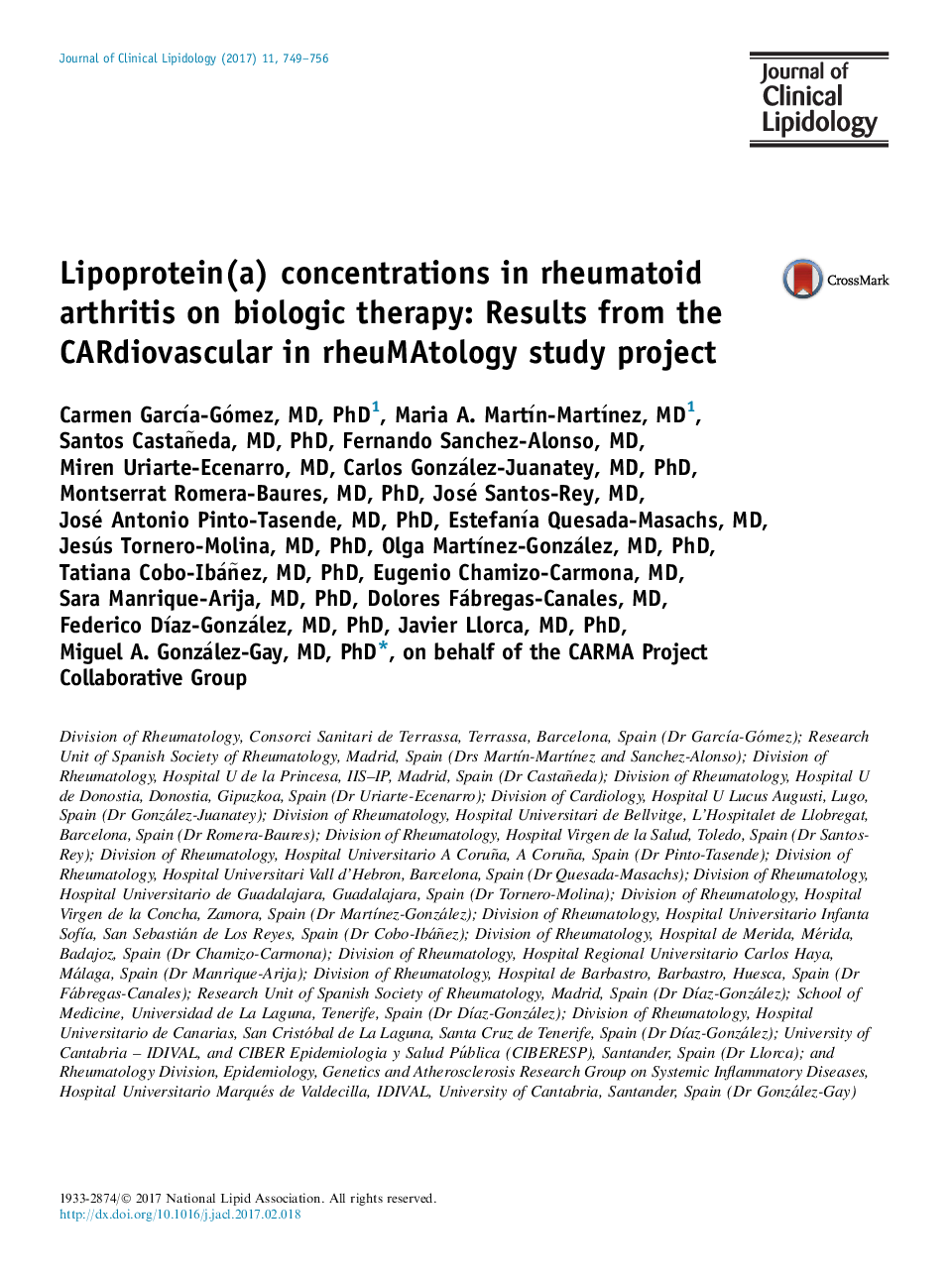| Article ID | Journal | Published Year | Pages | File Type |
|---|---|---|---|---|
| 5615139 | Journal of Clinical Lipidology | 2017 | 11 Pages |
â¢Rheumatoid arthritis on biological therapies, mainly anti-interleukin 6, displays lower lipoprotein (a) levels.â¢Patients with tocilizumab show higher total cholesterol and triglyceride levels, without differences in the atherogenic index.â¢Tocilizumab-treated patients in this study had lower disease activity but poorer scores on Health Assessment Questionnaire.
BackgroundPlasma concentrations of lipoprotein (a) (Lp(a)), a lipoprotein with atherogenic and thrombogenic properties, have a strong genetic basis, although high concentrations of Lp(a) have also been reported in the context of inflammation, as in rheumatoid arthritis (RA). Few studies evaluate the impact of biologic therapies (BT) on Lp(a) in RA, taking into account that with these new therapies a better control of inflammation is achieved.ObjectiveThe aim of the study was to evaluate the plasma concentrations of Lp(a) in Spanish RA patients on BT attending rheumatology outpatient clinics.MethodsBaseline analysis of the CARdiovascular in rheuMAtology project, a 10-year prospective study, evaluating the risk of cardiovascular events in RA and other forms of inflammatory arthritis. RA patients were classified according to treatment: no biologic, anti-tumor necrosis factor, anti-interleukin-6 receptor tocilizumab (TCZ), and other biologic (rituximab or abatacept). A model of linear multivariate regression was built in which the dependent variable was Lp(a) concentration and the explanatory variable was BT. The model was adjusted for confounding factors.ResultsSeven hundred and seventy-five RA patients were analyzed. Plasma concentrations of total cholesterol and triglyceride were significantly higher in TCZ-treated patients. Nevertheless, no significant difference in the atherogenic index between TCZ-treated patients and patients without BT was found. After adjusting for confounding factors, patients with BT had lower concentrations of Lp(a) than those without BT; however, only TCZ-treated patients achieved statistically significant differences (β: â0.303, 95% confidence interval: â0.558 to â0.047; P = .02).ConclusionsRA patients treated with TCZ show lower plasma concentrations of Lp(a) compared with patients without BT.
